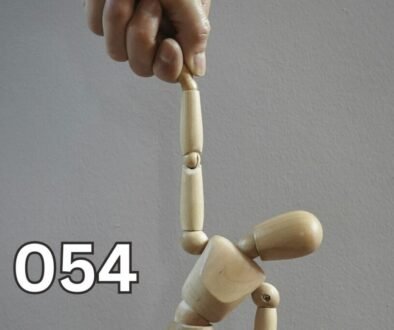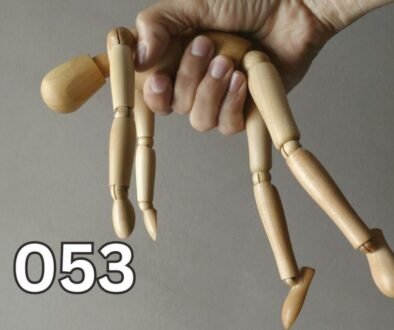Are You Being Controlled? Unveiling the Secrets of Invisible Psychological Tactics

04 MARCH 2025
Understanding Psychological Manipulation
Psychological manipulation surrounds us, often so subtly that we don’t even notice it. Have you ever been persuaded to do something or buy a product without realising why? If so, you’ve likely encountered one of the many psychological principles of influence at play.
Imagine this: someone asks you for a significant favour, and when you decline, they follow up with a much smaller request. You agree, thinking it’s reasonable, but what if that smaller favour was their goal all along?
Today, we’re diving into the world of manipulation, specifically, psychological manipulation. You might have unknowingly used it yourself or been subtly influenced by others. These techniques are woven into everyday interactions, sometimes so seamlessly that we don’t even notice. Could it have happened to you recently?
What is Influence?
At its core, psychological manipulation is a form of social influence. It uses specific tactics to subtly shape how others think, behave, or perceive situations, sometimes without them even realising it.
Robert Cialdini, in his groundbreaking book Influence: The Psychology of Persuasion, introduces six principles that explain how people can be influenced. These principles, often called “weapons” of persuasion, include:
- Reciprocity – Feeling compelled to return a favour.
- Commitment and Consistency – Aligning actions with promises or previous behaviour.
- Social Proof – Following what others are doing.
- Scarcity – Valuing things more when they seem limited.
- Liking (Affinity) – Being influenced by those we like or find attractive.
- Authority – Trusting those in positions of power or expertise.
These principles aren’t just theories, they’re part of everyday life, shaping decisions and actions more than we might realise. Have you ever noticed how these “weapons” have influenced you? Let’s explore them, starting with the principle of reciprocity.
1. The Principle of Reciprocity

We all know the feeling, someone does something nice for us, and we feel an urge to return the favour. That’s the principle of reciprocity at work. This deeply ingrained social behaviour often leads us to repay kindness, sometimes even more generously than necessary.
Example 1: The Free Sample Effect
Picture this: you’re walking through a lively shopping mall, and a cheerful food vendor offers you a free sample. Why not? you think. It’s a harmless way to decide if you like the product, right?
Here’s the twist: many people end up buying the item not because it’s their favourite but because they feel compelled to give back. That free sample wasn’t just a treat, it was a strategic favour. Unknowingly, you may think, They gave me something for free; it’s only fair to support them.
It’s a brilliant, tried-and-true sales strategy. Of course, it only works if the sample isn’t off-putting!
Example 2: Free Samples at Your Door
Picture this: a salesperson knocks on your door, offering you free products, maybe a travel-size toothpaste, some shampoo, or a cleaning spray. “It’s completely free,” they assure you. So, you take it, thinking, Why not?
Fast forward a few days. The same salesperson returns, asking if you’d like to share your thoughts about the product. After some polite small talk, they pose the question: “Would you like to buy one?”
Even if you haven’t used much of it, or didn’t particularly like it, you might still feel compelled to say yes. Why? Because receiving that freebie created a subtle sense of indebtedness. It’s a psychological nudge: They gave me something, so I should give something back.
The Door-in-the-Face Technique
This clever strategy takes advantage of a similar principle of reciprocity. First, the salesperson makes a bold request, perhaps asking you to buy a deluxe version of their product or a costly bundle. When you decline, they counter with a smaller, more reasonable ask, like purchasing just one item.
Here’s the catch: the smaller request was likely their goal all along. By scaling back their initial ask, they create the illusion of compromise, making you more likely to say yes. It’s a psychological tactic designed to make the second request feel both fair and appealing.
Cialdini’s Boy Scout Encounter: A Lesson in Reciprocity
In his book Influence: The Psychology of Persuasion, Robert Cialdini recounts a charming real-life interaction that demonstrates the principle of reciprocity.
While out for a walk, Cialdini was stopped by a young Boy Scout, about 11 or 12 years old. With a bright smile, the boy began, “The annual Boy Scout circus is happening this Saturday evening, and I’m selling tickets. Would you like to buy two admission tickets for $5 each?”
Cialdini wasn’t interested in attending and politely declined.
But the boy had a plan. Without missing a beat, he added, “Alright, sir, if you don’t want the tickets, how about buying a $1 chocolate bar instead?”
The smaller request felt reasonable, and before he knew it, Cialdini had agreed. In fact, he didn’t just buy one chocolate bar; he bought two.
This story highlights how a seemingly modest gesture or concession can nudge someone toward saying yes. It’s a perfect example of how the principle of reciprocity works in everyday interactions.
The Realisation: Why Robert Felt Tricked

As Robert walked away with two chocolate bars in hand, something didn’t sit right.
For starters, he hadn’t even wanted the chocolate bars. He also preferred keeping his money. Yet there he was, holding two chocolate bars, feeling a bit foolish. And the boy? He had already dashed off, cash in hand.
The Psychology Behind the Exchange
This interaction is a textbook example of the “door-in-the-face” technique.
The strategy begins with a big, bold request, like the $10 for two circus tickets. Unsurprisingly, it gets rejected. That’s when the follow-up comes in: a smaller, more reasonable-sounding request, such as buying a $1 chocolate bar.
In comparison to the original ask, the second request feels manageable and fair. This clever contrast makes it harder to say no. It creates a sense that the asker has made a concession, and we feel compelled to do the same by agreeing to the smaller request.
As Cialdini points out, resisting this sense of “indebtedness” is no easy feat. It’s a powerful psychological nudge that often influences our actions before we even realise it.
2. Commitment and Consistency
The principle of commitment and consistency is all about how we strive to match our words with our actions. It’s a trait we admire in others because it signals trustworthiness and integrity. After all, no one wants to deal with someone who says one thing and does another!
Cognitive Dissonance: The Inner Conflict
When our actions don’t align with our beliefs, many of us experience cognitive dissonance, an uncomfortable mental tension. To avoid this discomfort, we often adjust our behaviours or thoughts to stay consistent with what we’ve previously said or done. (Of course, some people seem immune to this discomfort!)
Why Consistency Matters
Once we’ve made a decision or taken a stance, there’s an almost irresistible urge to follow through. It feels natural, and satisfying, to behave in ways that confirm our earlier choices.
While this tendency promotes accountability, it also has a downside. Sometimes, we cling to a decision simply because we don’t want to seem inconsistent, even if the decision wasn’t the best. Instead of re-evaluating, we might double down, convincing ourselves we made the right choice all along.
This principle shapes not just our actions but also how we see ourselves and how others perceive us. It’s a fascinating dance between psychology and self-preservation.
Testing the Power of Commitment
In the United States, researchers conducted an experiment to explore how easily people could be persuaded to display a sign in their front gardens encouraging drivers to “Drive Safely.”

The challenge? The sign wasn’t exactly appealing. It was large, unattractive, and seemed irrelevant to most homeowners. Unsurprisingly, many residents were hesitant to agree to such a request.
Group A: The Direct Approach
To study this further, the researchers divided the neighbourhood into two groups, A and B. Group A residents were approached directly and asked, “Would you allow this sign to be placed in your front garden?”
The results were predictable. Only 17% of the residents said yes, while a striking 83% refused. This outcome highlights a common psychological reaction, people are often reluctant to commit to something they perceive as inconvenient or unrelated to their lives.
Group B: The Subtle Strategy
The researchers approached Group B with a gentler tactic. Instead of immediately requesting homeowners to display a large “Drive Safely” sign, they started small, distributing “Drive Safely” stickers and asking residents to stick them on their cars.
This minor request required little effort or commitment, and as expected, most people were happy to comply.
The Follow-Up Request
Three weeks later, the researchers returned, this time asking the same residents if they would allow a large “Drive Safely” sign to be installed in their front gardens. To their surprise, about 76% of the residents said yes, a stark contrast to Group A’s response.
The Role of Commitment and Consistency
What caused such a significant shift? The principle of commitment and consistency explains it well. By agreeing to the initial, low-effort request, residents began to see themselves as individuals who cared about community safety. This seemingly minor act of compliance created a subtle but lasting shift in their self-identity.
When confronted with the larger request, they felt a subconscious urge to stay consistent with their newfound role. Saying “no” might feel like contradicting their previous actions, which could create internal discomfort. Saying “yes”, however, felt natural and aligned with their emerging self-image.
The Foot-in-the-Door Effect
Some people skilfully apply the principle of commitment and consistency to influence others. The process starts small, perhaps with an easy request that feels trivial. Once the person agrees, the stakes are raised slightly, leading to a second, larger ask.
The logic often follows a pattern: “Since I’ve already agreed to help, it’s reasonable to help a little more.”
Step-by-Step Compliance
This method works like climbing a staircase. Each small step strengthens the person’s sense of commitment. By the time the final, significant request is made, saying “no” feels inconsistent with their earlier decisions.
This clever strategy is known as the “foot-in-the-door effect,” a widely used technique in various areas such as marketing, fundraising, and even personal negotiations.
3. The Power of Social Proof

Social proof is the idea that in uncertain situations, we often rely on others to guide our actions. This natural tendency to mimic socially accepted behaviours helps us navigate ambiguity and make decisions with confidence.
The Bystander Effect: A Pioneering Study
John Darley from New York University and Bibb Latané of Columbia University, both esteemed social psychologists, delved into the dynamics of bystander intervention. Their research famously uncovered the “bystander effect,” revealing how the presence of others can influence our willingness to help someone in need.
How the Experiment Was Designed
Participants believed they were part of a group interacting solely through an intercom system. In reality, actors were strategically placed to simulate different group sizes, testing whether the number of people present impacted helping behaviour.
Here’s how the groups were structured:
- Group A: A two-person interaction with one participant and one actor.
- Group B: A three-person interaction with one participant and two actors.
- Group C: A six-person interaction with one participant and five actors.
There were multiple trials conducted for each group setup, with a new participant for each trial. What they discovered sheds light on how group dynamics and social cues shape our decisions, especially in critical moments.
The Setup: Testing Responses to Emergencies
Imagine being in a separate room, participating in a group discussion over an intercom. You can’t see anyone, only hear their voices. Now, picture this: one of the participants suddenly cries out for help, saying, “I think I’m having a seizure.” How would you respond?
This was the scenario in a groundbreaking experiment designed to study responses to emergencies. The participants believed they were part of a real group, but the other “members” were actors, known as confederates. Their behaviour was carefully pre-scripted to ensure consistency.
Building the Scenario
The session started normally, with participants taking turns to share personal stories. One confederate shared a pre-recorded account of their struggles in New York, academic challenges, and a history of epilepsy, noting that stress could trigger seizures.
Suddenly, during their next turn, the confederate simulated an epileptic seizure. Through the intercom, the participant heard slurred speech, panicked phrases like, “I need help,” and the sound of escalating distress. The seizure was also pre-recorded, ensuring all participants experienced the same emergency.
Controlled but Realistic
Because participants were isolated and relied solely on audio cues, the setup created a controlled yet realistic environment to test their reactions. The researchers’ goal? To see how the perceived number of bystanders influenced a person’s likelihood of stepping in to help.
The Results: How Likely Are You to Help?
The results revealed a fascinating pattern:
- Group A (One-on-One): When participants believed they were the only ones witnessing the seizure, 85% acted immediately, and 100% intervened by the end.
- Group B (Two Bystanders): With one additional perceived bystander, the intervention rate dropped to 62%.
- Group C (Six people): In groups with five perceived bystanders, intervention rates plummeted to just 31%.
Understanding the Bystander Effect

The experiment highlights the bystander effect, a psychological phenomenon where the likelihood of helping decreases as the number of potential helpers increases. This occurs due to a diffusion of responsibility: when others are present, people feel less personally obligated to step in, assuming someone else will take charge.
The difference between Group A and Group C participants is telling. When there’s no one else to share the burden, we naturally feel a stronger pull to act. But as the perceived group grows, our sense of individual responsibility diminishes, often leading to inaction.
What Would You Do?
Would you step in to help, or would you hesitate, assuming someone else would handle it? Let’s dig deeper into why this happens.
Why Responsibility Feels Lighter in Groups
When you’re the only person witnessing an emergency, the responsibility is clear: It’s up to you to act. This awareness often sparks immediate intervention.
But in a group setting, this sense of accountability becomes shared, or diffused, among others. This leads to thoughts like, “If I don’t step in, someone else surely will.” This diffusion of responsibility is a key driver of the bystander effect, reducing the likelihood that any individual will take action.
The Hesitation Loop: Pluralistic Ignorance
Now picture this: You’re walking down a busy street when someone collapses nearby. You pause, scanning the crowd. Everyone else seems calm, so you assume the situation isn’t urgent.
This is pluralistic ignorance in action. When people in a group misread each other’s inaction as a signal that nothing is wrong, hesitation spreads. Everyone waits for someone else to act, creating a feedback loop of inaction.
Breaking the Cycle
These two psychological forces, diffusion of responsibility and pluralistic ignorance, can prevent intervention even when help is urgently needed. Have you ever experienced this hesitation? Recognising these tendencies is the first step toward overcoming them.
Why Do We Follow the Crowd?
Even when the facts are right in front of us, it’s human nature to pause and look to others for guidance. This instinct demonstrates the social proof principle, which tells us that in times of uncertainty, we often lean on the actions and opinions of those around us to make our own decisions.
Think about a time when you chose a crowded café over an empty one, was it because the coffee smelled better, or because the crowd signalled it was worth a try? Social proof works the same way in more critical moments, guiding our behaviour when we’re unsure what to do.
To Be Continued…

At nearly 3,000 words, we’ve already explored some fascinating concepts. But there’s more to uncover, three more principles, in fact! Rather than squeezing everything into one piece, let’s pause here and pick up the thread in the next article.
Get ready for the next instalment, where we’ll dive even deeper into the psychology of influence and uncover practical ways to spot these principles in action.



